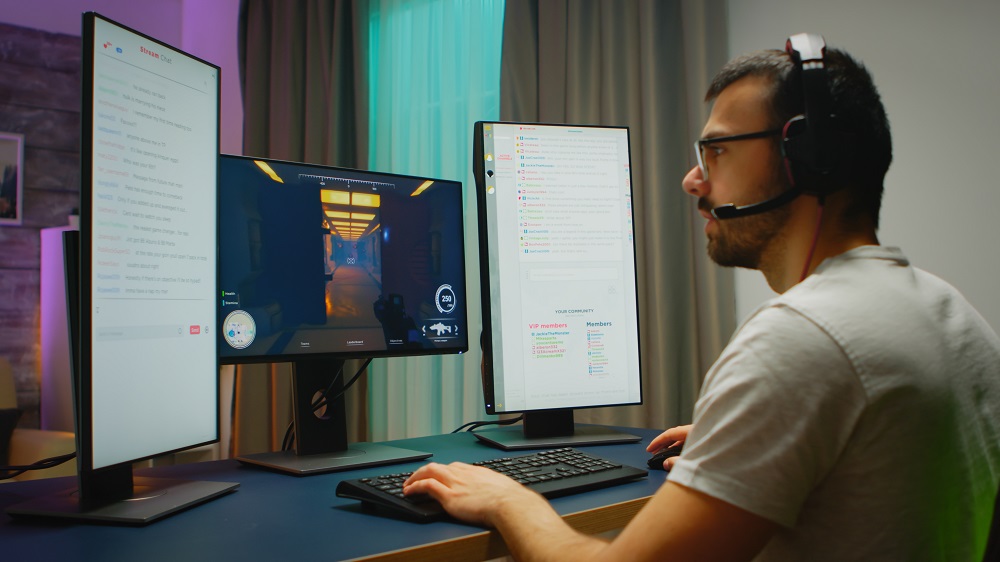The realm of game development is a captivating blend of creativity, technology, and passion. If you are a beginner and thinking of entering this world of game development, then this can be both an exciting & daunting journey.
However, having the right mindset, skills, and resources is important before entering because that will be an enriching adventure. Here, if you are a beginner, this article will help you explore the key steps and insights that will embark on your journey into the world of game development.
What is Game Development?
Game development is the process of creating interactive digital experiences, commonly known as video games. It involves a multidisciplinary approach that combines creativity, design, programming, and technology to bring virtual worlds to life.
Game developers conceptualize, design, and build games for various platforms, including consoles, PCs, mobile devices, and virtual reality systems.
The game development process typically includes designing the game’s concept, characters, and mechanics, followed by programming to implement functionality and create interactivity.
Visual and audio elements, such as graphics, animations, and sound effects, contribute to the immersive experience. Quality assurance and testing ensure the game functions as intended, and ongoing updates may address bugs or introduce new content.
Game development requires collaboration among artists, designers, programmers, and other specialists, each contributing their expertise to craft compelling and engaging digital entertainment.

Tips to Consider Before Entering in Game Development Industry
1.Define Your Motivation: Unraveling Your Passion for Games
Before delving into the technicalities, take a moment to reflect on your motivation. What draws you to the world of game development? Is it the desire to create immersive stories, design captivating characters, or engineer complex game mechanics? Understanding your passion and motivation will serve as the compass guiding your journey.
Once you know your niche, you can start your journey and make everything suitable. You can consider the aspects of game development that ignite your enthusiasm. This clarity will serve as a compass to steer you through the learning process, project development, and potential challenges.
2.Learn the Basics: Building a Solid Foundation
Learning the basics is the initial step towards laying a strong foundation in game creation. Start by becoming familiar with basic ideas by studying programming languages such as Python, C++, or Java. If you want to start with programming, several websites provide courses suitable for beginners.
Investigate further basic materials on music, graphics, and game design fundamentals. This fundamental understanding establishes the framework for developing captivating and immersive game experiences.
3.Choose Your Path: Exploring Different Specializations
If you want to start your game development journey, that involves exploring diverse specializations within the field. Game design is a realm of creativity that focuses on crafting engaging and compelling gameplay experiences.
Explore each aspect to discover where your strengths and interests lie. Game design focuses on creating engaging gameplay, while programming involves coding the game’s functionality. Art and sound design contribute to the visual and auditory aspects, respectively.
4.Select the Right Tools: Building Your Toolkit
The next important step after deciding on your game development specialism is to assemble your toolkit. Learn how to use the essential tools and game engines, which are among the most widely used. These platforms provide effective and user-friendly settings for creating, experimenting with, and putting different game aspects into production.
Whether creating visually stunning landscapes, intricately coded mechanics, or interactive storytelling, you may bring your creative thoughts to reality by becoming proficient with these technologies.
5.Dive into Tutorials and Courses: Learning by Doing
Hands-on experience is invaluable in the game development industry. Dive into tutorials and courses that guide you through the practical aspects of using game development tools. Several websites offer a plethora of tutorials ranging from beginner to advanced levels.
6.Create Your First Game: Applying What You’ve Learned
The best way to solidify your knowledge is by applying it in practice. Start small by creating a simple game project. This could be a classic arcade game, a 2D platformer, or a text-based adventure. The goal is to gain experience, understand the development process, and identify areas for improvement.
7.Start a Gaming Blog
Embarking on the journey of starting a gaming blog opens a portal to share your passion, insights, and experiences within the vibrant gaming world. You establish a platform that allows you to connect with like-minded enthusiasts, discuss the latest trends, and delve into the diverse realms of game development and gameplay.
Whether you’re exploring game design, critiquing releases, or sharing gaming tips, a gaming blog is a dynamic space to contribute your voice and connect with a global audience passionate about the captivating universe of gaming.
8.Build a Portfolio: Showcasing Your Skills
Assemble a portfolio to showcase your game development projects. You must include descriptions of each project, the roles you played, and any challenges you overcame. A strong portfolio is a powerful tool when applying for internships, entry-level positions, or freelance opportunities in the mobile game development company.
9.Attend Game Jams: Testing Your Creativity and Skills
Game jams are events where participants collaborate to create games within a limited timeframe. Joining a game jam is an excellent way to challenge yourself, test your creativity, and collaborate with other developers. There are several gaming events where you can go and attract participants from around the world.
10.Continue Learning: Embracing a Growth Mindset
Game development is a dynamic field constantly evolving with new technologies and trends. Embrace a growth mindset by staying curious and committed to continuous learning. While providing mobile game development services, exploring advanced topics, experimenting with emerging technologies, and adapting your skills to stay relevant in the ever-changing landscape is important.
Conclusion
Embarking on a career in game development as a beginner requires curiosity, perseverance, and a commitment to continuous learning. With a solid foundation, a supportive community, and a passion for the craft, you have the potential to turn your game development aspirations into a fulfilling and successful career.


















